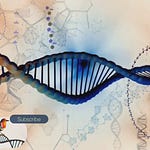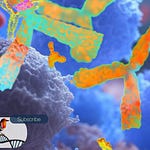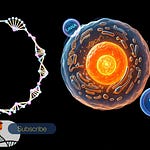Key Functions of Antibody, Nanobody, and Protein Engineering
https://www.biotechnologyreviews.com/p/multi-specific-antibodies-msabs-a
1. Antibody Affinity Maturation (Optimizing Binding Strength)
Antibodies and nanobodies undergo directed evolution to enhance binding affinity to their target antigens.
Example: Phage display and yeast display are widely used to generate higher-affinity variants by introducing mutations in the complementarity-determining regions (CDRs) of antibodies.
2. Nanobody Engineering for Stability & Small-Scale Targeting
Nanobodies (single-domain antibodies, VHHs) are engineered for increased thermal stability, solubility, and deeper tissue penetration due to their small size (~15 kDa) compared to traditional antibodies (~150 kDa).
Example: Camelid-derived nanobodies have been engineered for crossing the blood-brain barrier to target neurodegenerative disease proteins like tau and α-synuclein.
3. Antibody-Drug Conjugates (ADCs) for Targeted Therapy
Engineered antibodies are chemically conjugated to cytotoxic drugs, allowing targeted drug delivery to cancer cells while sparing healthy tissue.
Example: Trastuzumab emtansine (Kadcyla), an ADC targeting HER2-positive breast cancer, delivers a potent chemotherapeutic only to HER2-expressing cells.
4. Bispecific and Multispecific Antibodies
Bispecific antibodies (BsAbs) are engineered to recognize two different antigens or epitopes, improving therapeutic precision.
Example: Blinatumomab (Blincyto) links CD3 on T cells and CD19 on leukemia cells, enhancing targeted immune killing.
Multispecific antibodies extend this concept further, targeting multiple epitopes on a single antigen or multiple cell types.
5. Protein Engineering for Enhanced Half-Life and Fc Modifications
Engineering the Fc region of antibodies extends their half-life, enhances effector functions (e.g., ADCC, CDC), or reduces immune system interactions.
Example: Fc mutations (e.g., YTE mutations) in Efgartigimod and Daratumumab improve antibody stability and persistence in circulation.
6. Computational Design and AI-Driven Antibody Discovery
AI and computational protein modeling tools (AlphaFold, Rosetta, DeepMind) help predict antibody structures, optimize binding sites, and accelerate de novo antibody design.
Example: AI-designed synthetic antibodies are being developed to rapidly target emerging viral threats like coronaviruses and influenza strains.
Antibody & Protein Engineering in Biotech & Therapeutics
Engineered antibodies and proteins are transforming immunotherapy, targeted drug delivery, and precision medicine, with applications in cancer, infectious diseases, autoimmune disorders, and neurodegeneration.
We have multiple articles covering antibody & protein engineering in depth.
Check them out and dont forget to subscribe, thank you.
TRIM TECHNOLOGY for Generating protein libraries with controlled amino acid diversity
For synthesizing oligonucleotides where codons (triplets of nucleotides) are incorporated as pre-formed units, ensuring precise amino acid encoding.
Antibody/Protein Libraries with TRIM Oligonucleotide Technology
TRIM oligonucleotide codon design is crucial for lead candidate identification as it enables precise control over codon variability in libraries. By selecting custom or all-mixture codons, researchers can fine-tune diversity, ensuring optimal representation of amino acid sequences. This approach enhances the screening process for functional hits, increa…
Engineering Antibody Discovery, The Role of Synthetic Biology
Antibodies have become indispensable tools in modern medicine, providing effective treatments for a broad spectrum of diseases, including infectious diseases, autoimmune disorders, cancer, and neurodegenerative conditions. Despite their therapeutic success, traditional methods for discovering and developing antibodies, such as hybridoma technology and p…
DNA-Encoded Nanobodies, the future of immunotherapy?
DNA-encoded nanobodies represent a cutting-edge fusion of molecular biology, biotechnology, and nanomedicine, offering a transformative approach to diagnostics, therapeutics, and drug discovery. Nanobodies—small, single-domain antibody fragments derived from camelids like camels and llamas—have gained significant attention due to their unique properties…


















Share this post